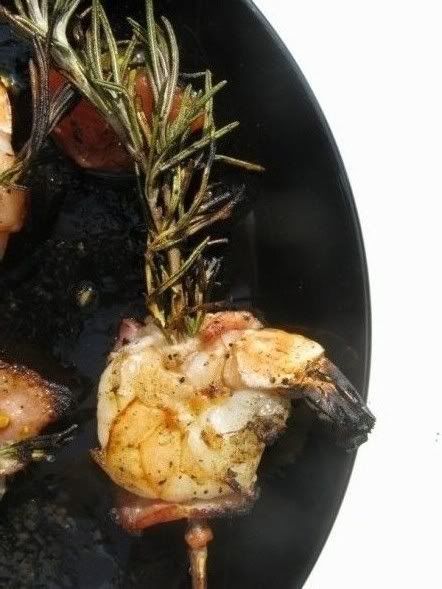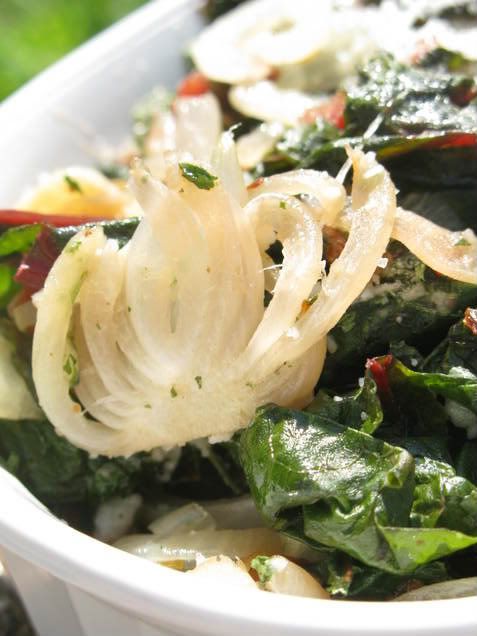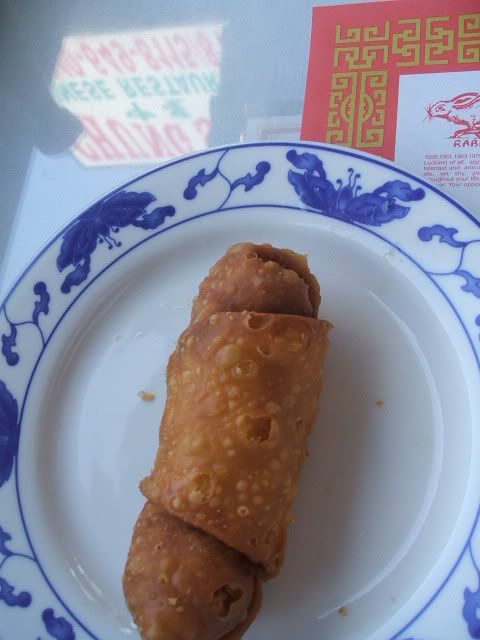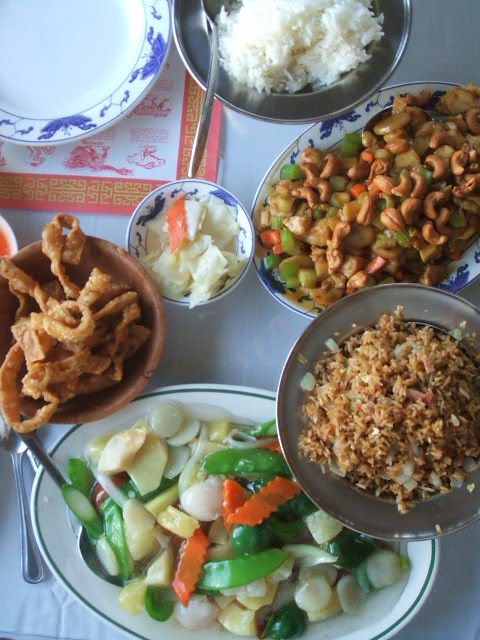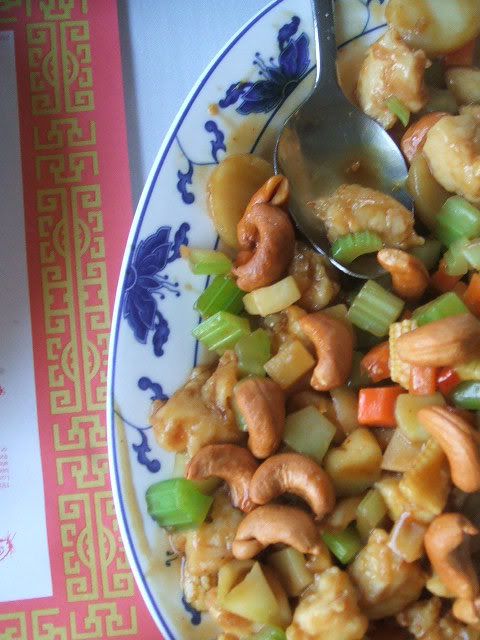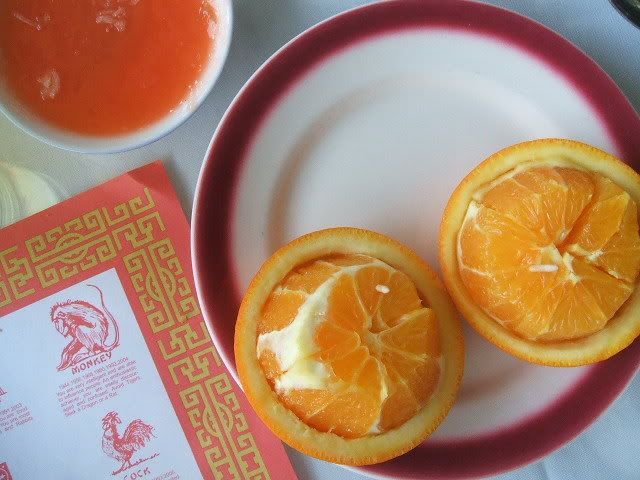 Here we go round the mulberry bush....
Here we go round the mulberry bush....Every year there is a generous tree that reaches over my parents fence with heavy drooping branches of succulent mulberries.
Taught with sweet juice and ready to burst, they await picking like anxious little water bombs perfect for canning.
And every year I brazenly climb a ladder, wave at my stunned neighbor and try to apease my fathers threats to chop off the branches with a jar of something sweet.
Mulberries have a gentle blackberry-like flavor and unapologetically stain nearly everything they touch which accounts for his itchy axe arm.
The more precocious berries, too impatient to be picked, drop faster than a wireless call tagging the concrete below with purple black graffitti.
The last person I gifted with a jar of mulberry jam looked at me with polite distrust - sort of like I just stepped off a mississippi raft in dirty jeans and a straw hat asking them to
whitewarsh a fence. I think she was expecting something more common and benign, like straight up strawberry.
But, gentle reader, I am here to tell you that mulberries don't reside in some kind of archaic Appalachian berry otherworld rubbing elbows with huckleberries and boysenberries.
They are actually fairly prolific, ripening across the delaware valley as we speak, and probably staring up at you from right under your nose.
(eew.)
Once you know how to recognize a tree it's kind of creepy how common they are.
This weekend at a bbq in south philly I nearly knocked a man down excitedly screaming,"mullberries!!" while gesturing towards the good Dr. to come look.
I was surprised to see several trees waving back at me with serrated fingers from an adjacent empty lot.
The good Dr. simply smiled sweetly and took another swig of his stout.
He's used to me by now.
 ...the mullberry bush...
...the mullberry bush...Before we start some advice:
- Don't get sick!
Before you call up your instinctual hunter-gatherer and get picking , become aquainted with your tree.
There are over 150 species of mulberry.
Not all are suitable for picking and only the ripe fruits are edible.
The unripe fruits , sap and several others parts of some trees are poisonous causing stomach upset and hallucinations.
If you do not know what type of tree you are collecting from or are uncertain that it is safe to use the fruit you collect , DON'T DO IT.
In addition to the above warning be sure the trees you are picking from have not been sprayed with pesticides or been given the opportunity to absorb nasty toxins from road sides or airplane dropping's
(i.e. gyspy moth spray).
Don't let this scare you though.
White mulberry (white mulberry being a seperate species, we are not talking about the unripe fruit) has been used in Chineese medicine for centuries against fever.
It lowers cholesterol and protects the liver.
Mulberries of many species are also an excellent food stock.
They have a fair amount of vitamins C and K with the added benefit of containing health promoting antioxidants called anthocyanin's.
- Pick responsibly.
One of the things that make tree's like mulberry so awesome is that they invite wildlife back into our living spaces.
Birds, butterflies and animals of all sorts rely on these tree's for nourishment.
Don't go hogging all the food.
Animal's don't have freezers or supermarkets.
Try to only pick 1/4 or less of what you see.
- Keep in mind that many wild plants don't fruit with the same predictability as their domesticated cousins who have been bred over generations to exhibit characteristics humans find usefull.
If your tree is only giving a little fruit at a time,
save what you collect in the frigidaire for a few days or freeze it.
Fill a mason jar with what you've got and cover it in a simple syrup of one part sugar to three parts water and freeze.
The syrup keeps the fruit from getting gross in the freezer.
Mulberries also mix imperceptibly with blackberries and go great with an equal measure of blueberries if you come up a little short.
- Mulberries are like that athletic kid in gym class who is just dying to be picked.
They fall right off the branch into your waiting hands, a jar or the ground.
While picking berries don't be afraid to pick up the ones on the ground.
Not only will they be washed, but they are also being cooked and sterilized.
If you don't have a ladder feel free to capitalize on their eagerness to be picked and shake a few branches to encourage them to fall.
- Making jam is not difficult but there is a bit of science involved.
Im not going to get all "Bill Nye the sciecne guy on it" on it , but...
Sugar, an acid (here lemon juice) and pectin all combine to make the jam "set."
This is the difference between a syrup and what makes a jam jamy.
If you will a jamy jam.
Some fruits are endowed with more pectin and therefore more forgiving of sloppy proportions , but mulberries can hold a little bit of a grudge.
Aparently when God was giving out pectin he kind of short changed the mullberry.
(what a rascal!)
 The darker the berry ... the sweeter the juice!
The darker the berry ... the sweeter the juice!There are several ways to attack this problem :
- adding a high pectin fruit / or high pectin jam in with the mulberries
(i.e. apple/applejam)
- adding in a packet of commercial pectin (i.e. "sure-jel.")
- or go au natural. Collect 20%-30% less ripe-red berries.
(i.e. for every ten collect 2 or 3 red berries. The less ripe berries hold more pectin).
Avoid unripe fruit as it has proven to be poisionous.
In the lovely image of the mulberry spectrum you see above, I would only use the two on the left - the purple and the red. To be safe avoid berries with an white spots.
Personally I collect red berries and also add in some commercial pectin for good measure.
 ...the mulberry bush...Mulberry Jam
...the mulberry bush...Mulberry Jam
- 3 cups mulberries
- 1 3/4 c - 3 c cup sugar depending on sweetness of fruit.
- juice of one lemon
- one packett of sure-jel
Hot Pack Canning: A Rough Sketch Canning is a simple process of cooking fruit, pouring it in jars and then boiling it in a big pot of water. The boiling water simultaneously seals the jar and kills any unwanted bacteria, mold or yeast.
We are going to approach making jam by setting up two stations.
The first will be your stemming station where you prepare the fruit for cooking.
This is best on a kitchen table or somewhere you can sit down and stem/pit/peel fruit which could take a minute or two.
The second is your canning sation.
This one should be set up next to your range or really close in proximity.
This is where you get to use all your dern-fangled canning equipment.
I think it's easier , and best, to just go out and spring for some equipment if you can't borrow it or already own it.
Ball and several other canning companies make "canning kits."
These come in two varieties.
The bigger one that costs bigger money and and the little one that costs littler money.
The bigger kit generally runs about 40 dollars.
It includes a giant pot with an adjustable wire rack .
The rack lifts your precious jars of sweet and sticky just enough to keep their cute little tooshies from scorching on the hot pot bottom.
It also has the same stuff as the small kit.
The smaller one cost's about 12 bucks.
It has several pieces in it - the most important of which are the jar grabber and a magical magnetic "wand" for picking up hot lids.
Both are designed to keep you from burning your precious digits and well worth the the peseta's.
Many of these kits also include a funnel to fit in the mouth of your jars and a ruler to be sure your jam sits within a 1/4 of the jars lid.
Check out
amazon.com to check out products /prices / reviews before you buy.
You could always get creative and use a stock pot for the canning bath, replace a pair of tongs for the jar grabber, and a fork for the magnetic wand, but these things are going to get HOT.
Go buy some new toys.
You will also need a second non-reactive pot to boil the fruit/sugar/pectin/lemon juice in. A non-reactive pot generally means someting other than aluminum.
Aluminum readily reacts with acids and jam making utilizes acids to make the jam gel.
You may also want a ladel to transfer the hot jam from pot to jars.
The ProcessFill your canning vessel with enough water to cover the jars up to an inch and a half (roughly one thumb length from the joint that meets your hand to the finger nail) and place it on the stove to boil.
This will create your canning bath. Think of it as a big hot jaccuzzi for your cute little mason jars.
The pot can get pretty heavy so feel free to fill it a little , then transfer water from the sink to the canning bath with a smaller more manageable pot.
Unscrew the mason jars and seperate the two part lid from the jar.
Place the screw top on the counter at your canning station, put the lids in a small pot of water you will simmer for the duration of the canning process, and sink the jars in the canning bath.
If you look at the bottom of the discus piece of the two part lid, you will see it is ringed in a rubberish band. When placed on top of the mason jar this is what seals your jar up nice and cozy so that no bacteria or mold can get into your jam.
Simmering the lids brings them up to the temperature of the red hot jars coming out of the canning bath and facilitates a proper seal.
There are a few times I have canned on the quick and forgotten to simmer the lids.
I am not advising you to skip this step, but they did seal.
Keep in mind that once the discus piece of the two part lid has been boiled it should not be used again.
However, the screw top lid can be used several times over provided it doesn't have any dents and fits a jar tightly.
Boxes of 12 new discus lids are packaged seperately and sold on their own.
Buying a box will enable you to reuse your screw tops and glassware.
How green!
If you are cooking
without a commercial pectin , stick a small juice glass or ceramic plate in the freezer. I will explain this below.
Wash the fruit and then set up your "stemming" station.
This stemming station consits of nothing more then two bowls , a pairing knife and a paper towel.
In one bowl you will sit the freshly cleaned berries/fruit.
You want to de-stem each piece of fruit.
The stems actually run pretty deep in these bad boys and you will want to sort of dig down in them to get as much as you can.
A few left behind won't hurt anyone, but the stems cook differently then the soft drups around them. Too many may add a few "twiggy" spots to your jam.
After digging out the stems place the berries in the second bowl.
Be warned that the berries kind of fall apart when you take the stem out.
This is perfectly ok.
In a lot of jam recipes your asked to crush the fruit to get more of the juice out. Lucky for us stemming mulberries sort of collapses the fruit releasing juice in the process.
These little guys can get some distance - shooting juice clear across the room.
If you look carefully you will see them eyeing up your crew necks.
Do not wear a white shirt unless you hate it!
Stemming could take you a little time maybe depending on how much mulberry you've got.

...here we go round the mulberry bush so early in the morning...
Once you have completed stemming the fruit, coat it with the lemon juice and then toss with the sugar.
Keep in mind lemon seeds can make jam bitter.
Be sure to pick them out.
At this point it's ready to go on the stove, but I usually throw in an extra step if im not in a rush.
I let the fruit rest.
I cover it with cling wrap and place it in the frigidaire anywhere from overnight up to a day.
This is the old school way.
In my experience it gives the acid, pectin and sugar some time to get acquainted with one another, ultimately drawing out more juice and adding up to an overall better texture.
It might just be me,but jams prepared this way seem to be more on the goopy spreadable smell great side and less on the plasticy jello-like aspic side.
Next, wether it has rested overnight or comes straight from your stem station,
place the fruit,sugar and lemon juice mixture in a pot on low heat and stir constantly until it has all been incorporated into a seemless syrup.
After some time you will see that pinkish foam starting to appear on its surface.
It's nothing weird like rabbies or anything.
Just bubbles.
You can choose to leave it be as I do or skim it off the top with a spoon.
I also know people who add in a tbl of butter to cut down the foam.
I am a little wary of this as I am unsure of how fats would breakdown over time in a jar , but grandmas have been doing it for years.
Play at your own risk.
Keep stirring and heating the syrup until boiling bubbles form that you can not stir away.
When you have reached this stage it is called a "hard boil."
Its not necessary to use, but if you have a candy thermometer it should be registering around 220 degrees farenheit.
Add in your sure-jell and stir until it is fully incorporated.
Sure-jel is a preparation of powdered pectin that will ensure your jam will gel.
Get it?
Suuure-jel?! (*nerdy snort laugh*).
It is available in the hardware section of most grocery stores oftehn right next to the mason jars.
Jam can be made without it , but generally needs to be cooked longer.
This longer cooking time can make the fruit rubbery and tasteless.
Add in and extra 5 - 10 minutes of boiling in the canning bath to sterilize teh jars and you come up with a pretty lifeless jam.
The first indicater that your syrup is jamming is the hard boil.
The second is the plate test.
Remember that piece of dinnerware in the freezer?
This is it's cue.
You can trust a commecial pectin to set your jam without a test.
However if you are adding in apple jam or counting on the natural pectin in a fruit to make the jam set you will want to take the plate out and put a dab of jam on it. Return the plate back to its icy apartment in the freezer and check back in a minute or so. When the plated jam sets up the way you like it is done.
Again when using a commercial pectin this step isn't really necessary but it is fun to see how "done" it is.
It should be mentioned that one issue with commercial pectin is that it breaks down fairly quickly at high temperatures.
If you read the insert that comes with your
Sure-Jell packett will suggest that you boil it for one minute only.
To gaugae a full minute I usually count to sixty slowly (a doi Ralph),
or sing a short song the duration of one minute.
As it is getting closer to the fourth of July lets go with the national anthem.
That's the one that starts, "Oh say can you see..."
Once you hit , "...and the home of the brave..." cut the heat and move the pot to a cool burner.
Now we move to the canning station.
Retrieve a jar from the now boiling canning bath.
Ladel the hot jam into a warm sterilized jar, top with a lid disk from the simmering pot and then use an oven mitt to screw on the second part of the lid.
(this is a good place to use your fancy equipment like the funnel and the magical magnetic "wand.")
Place each jar in the water bath one by one directly after it's lid is screwed on. You want to minimize its time out of the bath.
Don't let the baby get cold.
Let it hang out in there 5-10 minutes.
When removing the jars try to go in sequential order, taking out the first jar you placed in until you pick up the last.
Try not to bang the jars around too much and don't touch their tops for a while.
As they cool down, a vaccum begins to form within the jar which will seal it from the outside.
Over the next hour or so you will hear little tin-y popping noises that indicate your jars have sealed.
To check if a jar as sealed properly , press gently on the lid after it has completely cooled.
If it flexes it has not properly sealed.
In this case refrigerate it immediately and use it up asap, or just toss it.
It is possible to save it by re-processing it , but at this point I have no experience with that.
I am sure you could hunt down instructions on the interweb.
If anyone tries it let me know how it goes.
Jars that have sealed can be used up to a after they have been sealed.
Date them to be sure no one gets ill.
here is a great website to check out.
Not only is there a butt load of recipes and general information on canning , but you can also type in your zip code to get a list of farms in your area where you can pick your own fruit.
http://www.pickyourown.org/ There are also several other web sites available on the internets many sponspered by canning companies like Ball.
 P.s. "Here we go round the mulberry bush" was first sung by felmale inmates of a British prison.
P.s. "Here we go round the mulberry bush" was first sung by felmale inmates of a British prison.
See the disclaimer below and don't sue me or try to put me there.
If you want to use it as your "minute song" I would suggest singing four verses.*Disclaimer: I am not a professional and cannot be held accountable for any type of poisioning based on the recommendations I have made above wether due to picking bad fruit or bad canning technique. Or anything else for that manner.s
Do your own research on what you have available to you before jumping in to this or any other recipe.
If you are unsure if something will make you sick, don't eat it.
Can at your own risk.
